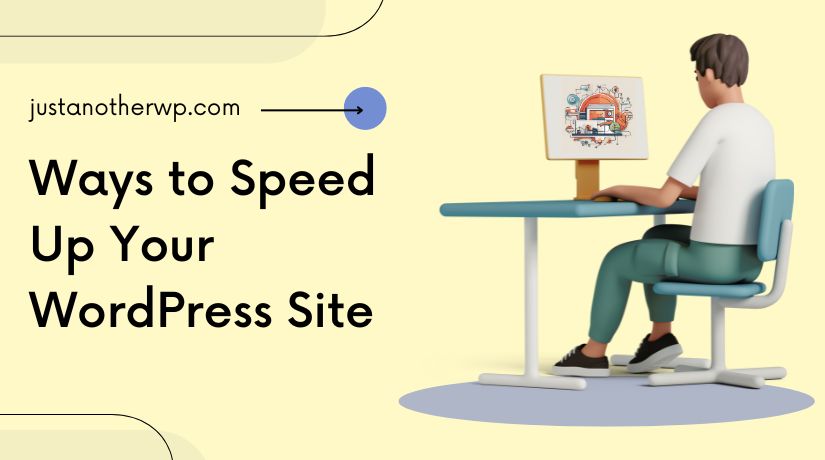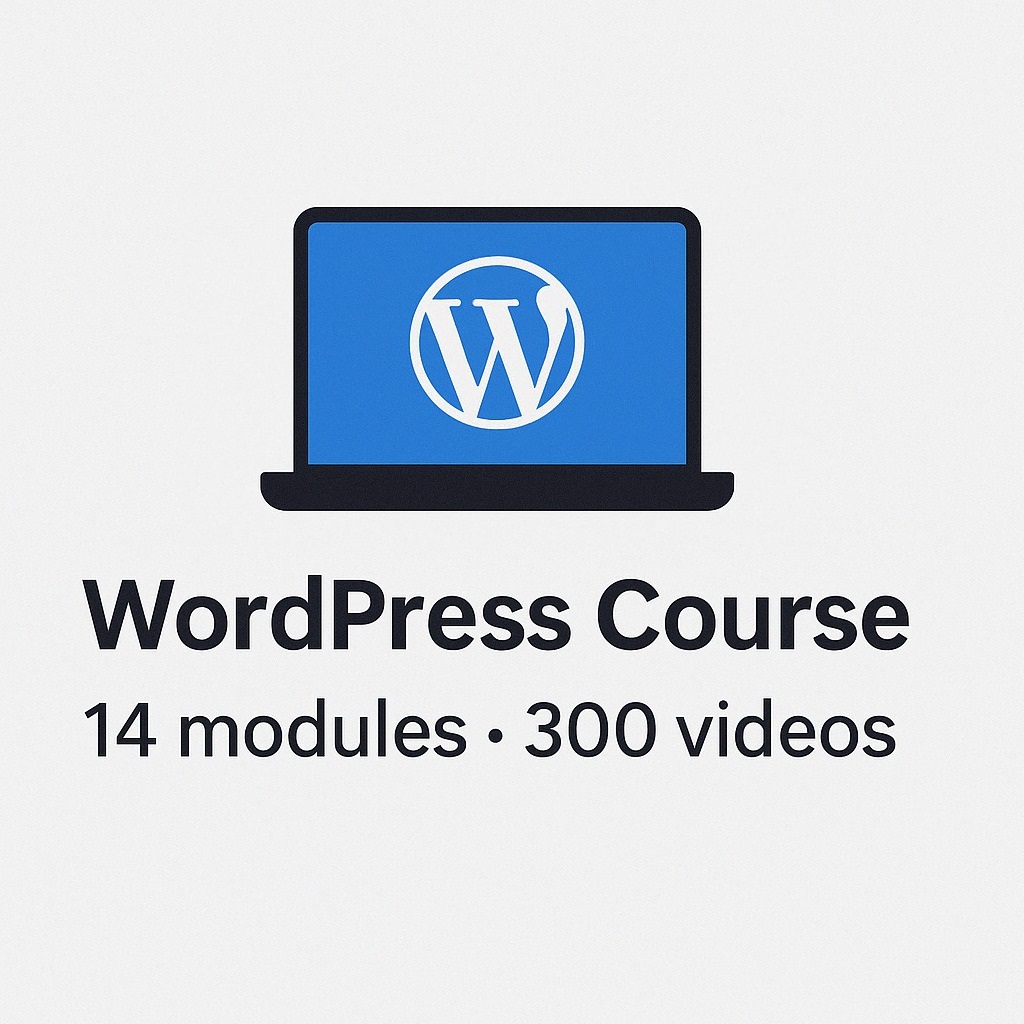
Table of Contents
- Importance of Speed Up Your WordPress Site
- Core and Advanced Speed Up Your WordPress Site Strategies
- Conclusion for Speed Up Your WordPress Site
The speed of a website matters. Users are irritated with a sluggish website. Before it even loads, they could depart. For owners of WordPress websites, speed is a must, not an option. A speedy website improves both search engine rankings and user experience. It’s time to take action if your WordPress website is loading slowly. In this piece, we’ll examine doable strategies for improving the speed at which your WordPress website loads. You’ll learn simple yet efficient techniques to optimize WordPress’ speed.
Importance of Speed Up Your WordPress Site
A quick website maintains user interest. Consumers anticipate speedy website loads. If not, they go on. Your website’s performance suffers from high bounce rates. For conversions, speed is equally essential. More sign-ups and revenues result from faster websites. Speed is a ranking criteria in search engine optimization (SEO). Google likes websites that load quickly. For mobile users as well, it’s crucial. Frequently, mobile users have slower connections. They can access your material quickly if your website loads quickly.
Assessing Your WordPress Site’s Current Speed
The first step to picking up the pace is recognizing where you stand. Start by seeing how quickly your website loads. Using technologies like GTmetrix, Pingdom, and Google PageSpeed Insights is beneficial. They show your website’s areas of need as well as how quickly it loads.
Focus on the important metrics. The load time should preferably be less than two seconds. Another crucial statistic is Time to First Byte (TTFB). It calculates the response time of your server. Moreover, page size impacts speed. It takes longer for a page to load the larger it is.
Compare your outcomes to others. Check the speed of your website against industry norms. This supports your goal-setting process. You may begin optimizing your website as soon as you are aware of its present performance.
Core and Advanced Speed Up Your WordPress Site Strategies
Optimize Images for Faster Loading
Pictures on your website might slow things down. Large image files take longer to load. Photo optimization is vital. First, reduce the size of your photos. Make use of apps like TinyPNG or Smush. They preserve quality while reducing file sizes. Smaller files load more rapidly.
Next, choose photos that are responsive. Images that are responsively designed change to fit different screen sizes. It also reduces unnecessary burden on smaller devices. Choose the correct photo format as well. JPEG is ideal for images; PNG is excellent for graphics with less colors. Try to use the WebP format. It offers excellent quality at smaller file sizes.
Apply slow loading in the end. Lazy loading prevents images from loading until they are really needed. This improves first load times. Visitors view your content more rapidly.
Optimizing images is a quick win. It significantly speeds up your WordPress site.
Leverage Browser Caching
In browsers, caching works really well. It speeds up the loading time of your website for returning users. Some elements, such images and JavaScript, are stored in the browser of a website visitor. Instead of loading these components from your server on subsequent visits, the browser loads them from its cache. Load time is therefore reduced.
Setting up browser caching is simple. Make use of plugins like W3 Total Cache and WordPress Super Cache. These plugins take care of the caching. By keeping static files in the user’s browser, they reduce the amount of requests that are sent to your server.
Browser caching lowers server load and speeds up your website. This makes the website more effective, especially for returning users.
Minimize HTTP Requests
Every time a website loads, a lot of HTTP requests are sent. These requests are sent for a variety of files, including images, stylesheets, and scripts. More queries will cause your website to load more slowly. If you decrease the amount of HTTP requests, your WordPress website will load more quickly.
First, merge the JavaScript and CSS files together. Combine several little files into one larger file rather than loading them one at a time. As a result, fewer requests are made. For pictures, you may also utilize CSS sprites. Sprites are images that are combined into a single file. Depending on what is required, only a piece of the sprite is displayed.
WP Rocket and Autoptimize are two useful plugins. They automatically optimize and minimize the quantity of HTTP requests. A significant increase in site speed may be achieved by reducing the number of HTTP queries.
Optimize CSS, JavaScript, and HTML
The coding of your website influences its speed. Load times are slowed by large, inefficient files. First, minify your HTML, JavaScript, and CSS. Minification gets rid of characters that aren’t needed, such comments and spaces. This lowers file sizes without affecting their functionality. Files with less size load more quickly.
Another strategy is deferring JavaScript loading. Normally, JavaScript loads before the page renders. This can delay how quickly users see your content. Deferring JavaScript allows the page to load first. The JavaScript then loads after. This improves the perceived speed.
Inline critical CSS is also important. Inline CSS for the above-the-fold content. This ensures that critical styles load immediately. The rest of the CSS can load later.
For automation, use plugins such as WP Fastest Cache and Autoptimize. Your site will load faster thanks to these technologies, which make code optimization simpler.
Utilize a Content Delivery Network (CDN)
A Content Delivery Network (CDN) is revolutionary in terms of speed. CDNs use a number of servers to distribute content from your website around the world. When people visit your website, the content delivery network (CDN) uses the closest server to provide content to them. This reduces latency and speeds up load times.
CDNs are especially useful for sites with global audiences. No matter where your visitors are, they get faster access to your content. Popular CDNs include Cloudflare, StackPath, and KeyCDN.
It is simple to set up a CDN. WordPress integration is often simple with CDNs. Once configured, faster delivery of your content will enhance both SEO and user experience.
Choose a Reliable Hosting Provider
The speed of your website is greatly influenced by your hosting company. A sluggish website is a result of a slow server. Shared hosting might be slower, even if it is sometimes less expensive. There may be delays since your site uses resources that many other sites utilize.
Consider making the move to VPS or managed WordPress hosting. With more dedicated resources provided by VPS (Virtual Private Server), speed may be enhanced. Managed WordPress hosting runs faster and loads pages more quickly since it was created with WordPress in mind.
Quick optimization is a distinguishing feature of vendors like SiteGround, Kinsta, and WP Engine. They provide features like caching at the server level and automatic upgrades, among others. Selecting the finest hosting company is an essential first step in optimizing a WordPress website.
Limit Plugins and Optimize Database
A WordPress website with too many plugins may perform slowly. To function, each plugin adds code and needs resources. There’s a chance that some would clash, which would hinder performance. Go over your plugins first. Activate and remove any that are not needed or utilized. Your site will load faster the fewer plugins you have installed.
Go on to your database next. Spam comments, discarded items, post modifications, and other extraneous data may accumulate over time and clog your WordPress database. This mess makes your website load slower. To tidy up your database, use plugins such as WP Optimize. Maintaining speed and performance may be achieved by routinely optimizing your database.
Performing these tasks regularly ensures your WordPress site remains fast and responsive.
Enable GZIP Compression
GZIP compression is a quick and simple way to make your website faster. It compresses your website’s files before sending them to the user’s browser. Faster downloads from lesser files cause websites to load more quickly.
It’s simple to enable GZIP compression. To automate this process, you can either utilize a plugin like WP Rocket or W3 Total Cache, or you may add a few lines of code to your.htaccess file. GZIP may be easily enabled without technical expertise thanks to these plugins.
The GZIP compression has a big effect. Up to 70% less file size is required, which results in much quicker page loads.
Regularly Update WordPress and Plugins
You should regularly update your WordPress website maintenance for security and efficiency. Updates often feature bug fixes and performance improvements. Outdated software might slow down your website and make it more susceptible to security attacks.
Activate automatic updates for WordPress core, plugins, and themes whenever possible. This ensures that the versions you’re utilizing are always the most recent. But before you make any changes, don’t forget to backup your website. Certain updates may cause compatibility issues. Having a backup ensures that, in the event that something goes wrong, you can restore your website.
Frequent updates maintain the functionality and efficiency of your website.
Monitor and Continuously Optimize
The process of improving a website’s performance takes time. It needs constant observation and adjustment. Use resources like Google PageSpeed Insights, GTmetrix, or Pingdom to often test the performance of your website. These tools assist you in measuring advancements and identifying new problems.
Listen to user feedback as well. Users may notice speed issues that you might miss. Use their input to make further optimizations.
Finally, stay informed about new WordPress developments and speed optimization techniques. Technology changes, and staying updated ensures your site remains fast and competitive.
Reduce External Scripts and Fonts
Scripts and external fonts have a significant impact on load times. Every external file that has to be loaded causes the page to load more slowly. This includes third-party services, ads, and scripts for monitoring and external fonts like Google typefaces.
To begin, determine which external scripts are necessary. Trash the ones that are not essential. To avoid their obstructing the page’s display, think about loading the remaining ones asynchronously or by delaying their loading.
Similarly, minimize the use of external fonts. Limit yourself to one or two font families and only the necessary weights. Consider hosting the fonts locally instead of relying on external servers, which can reduce loading times.
Reducing external dependencies ensures that your site loads more quickly and consistently, regardless of external factors.
Conclusion for Speed Up Your WordPress Site
The speed of a website determines its success. WordPress websites that load quickly enhance the user experience, boost search engine ranking, and boost conversions. By using these strategies—optimizing images, using a CDN, choosing the best hosting, and managing your website—you may significantly improve the speed of your WordPress website. Remember that optimization requires ongoing work.
By consistently evaluating and improving your website, you can maintain optimal site performance. Your speed optimization efforts will pay off in the form of higher search engine ranks and pleased users.

